The Ao Dai is more than just clothing; it's a symbol of Vietnamese culture, heritage, and identity. With its origins deeply embedded in the annals of history, the Ao Dai has gracefully evolved over the centuries to become a powerful emblem of elegance and tradition.
Origins of the Ao Dai
The roots of the Ao Dai can be traced back to the Nguyen Dynasty (1802-1945). However, its foundation is thought to have been laid even earlier during the Ly Dynasty (1010-1225), albeit in a different form. The modern Ao Dai emerged in the early 18th century and featured a two-piece ensemble with a fitted top and flowing pants.

Experiencing many ups and downs in history, the Ao Dai has always been considered an indispensable traditional costume of every Hue citizen from the past to the present.
Evolution of the Ao Dai Across Centuries
The Ao Dai experienced various transformations throughout history, influenced by different ruling dynasties and cultural exchanges with neighboring countries. The French colonial period saw the Ao Dai evolving further, incorporating Western elements while retaining its distinct Vietnamese essence. In the 1930s, the ao dai underwent a significant transformation when it was modernized by French-educated Vietnamese women. The two-piece garment was replaced by a more form-fitting design, with a long tunic reaching down to the ankles and loose-fitting trousers. This modernized version of the ao dai became popular among Vietnamese women and has remained the standard style ever since.
Cultural Significance of the Ao Dai
The ao dai is a symbol of Vietnamese culture and identity. It is commonly worn on significant occasions such as weddings, festivals, and formal events. It is also worn by Vietnamese women in the military and by government officials. The ao dai is a symbol of national pride and identity, representing the spirit of unity and resilience of the Vietnamese people. The Ao Dai transcends fashion; it's a testament to the Vietnamese people's resilience and cultural pride. It represents the harmony between the traditional and the modern, the past and the present. This attire is often worn on special occasions, reflecting the values of respect and grace.

Gratitude to Vu Vuong Nguyen Phuc Khoat - The person who has the merit of remaking Vietnamese Ao Dai
The Ao Dai in Modern Vietnam
In contemporary Vietnam, the Ao Dai remains an essential part of the national identity. It's commonly worn at important events like weddings, festivals, and ceremonies, symbolizing both elegance and respect for tradition. Schools also adopt Ao Dai uniforms to instill cultural awareness in the younger generation.

Purple Ao Dai is the favorite outfit of female MCs at events in Hue
The Ao Dai's Global Influence
Beyond Vietnam's borders, the Ao Dai has gained international recognition and admiration. Its unique design and cultural significance have inspired fashion designers around the world, leading to Ao Dai-themed events and collections on international runways.
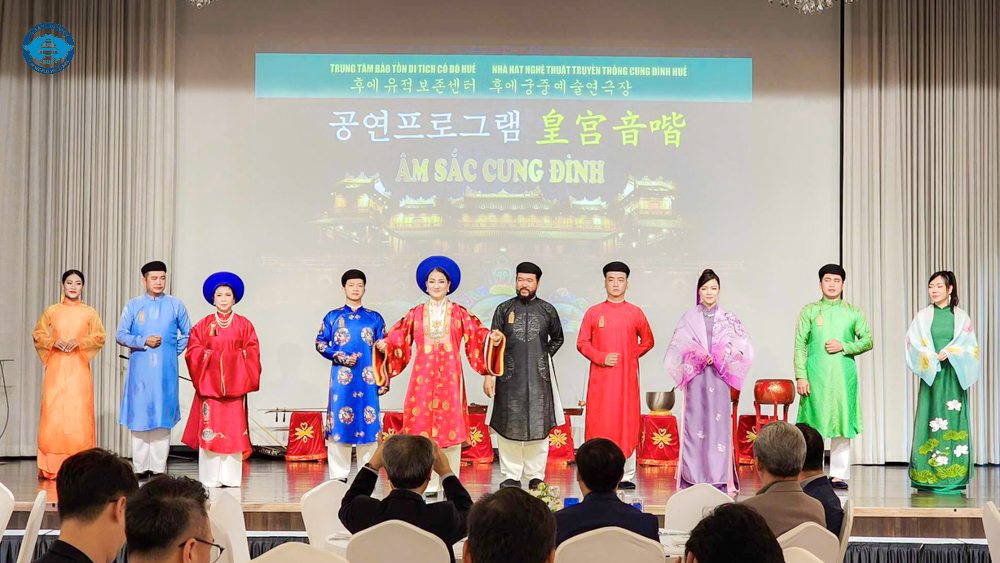
Thua Thien Hue province organizes tourism promotion activities in the capital Seoul - Korea
Crafting an Ao Dai: Materials and Techniques
The art of crafting an Ao Dai involves intricate techniques and attention to detail. From choosing the fabric to hand-stitched embellishments, skilled artisans invest their expertise to create this masterpiece.

Established in 1955, Minh Tan Ao Dai Tailor is a well-known and long-standing brand in Hue.
Ao Dai Variations: Traditional and Contemporary Styles
Over time, different regions in Vietnam have embraced the Ao Dai, adapting it to their own cultural aesthetics. While traditional styles maintain a timeless elegance, contemporary designs experiment with diverse cuts, colors, and motifs.
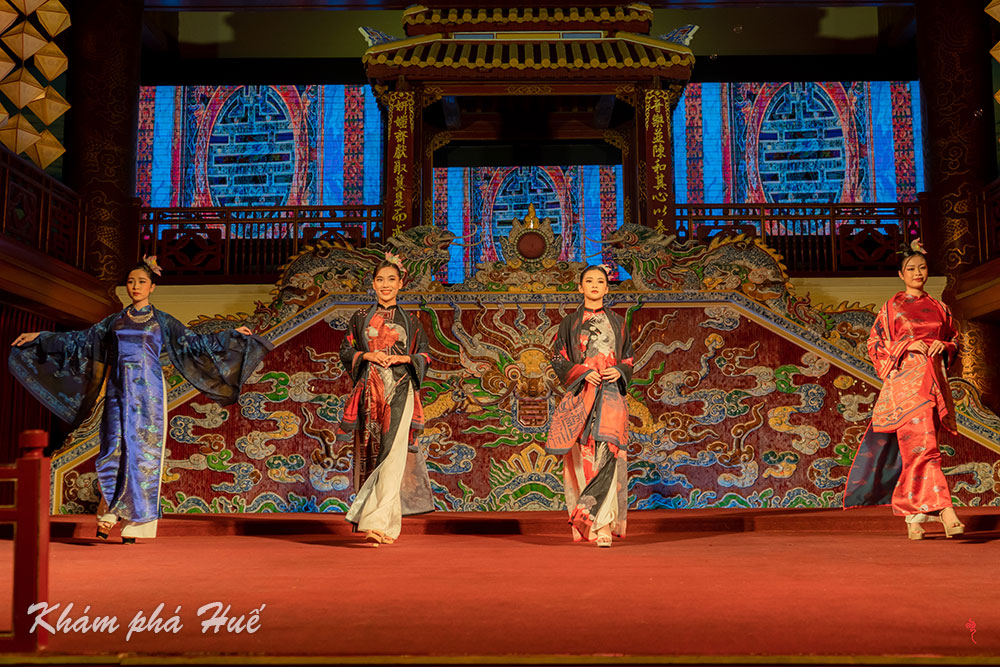
Ao Dai Collection of Viet Bao Designer
Symbolism and Colors in the Ao Dai
Colors hold profound meanings in the Ao Dai. White symbolizes purity, yellow represents luck, red signifies prosperity, and blue reflects the vitality of life. These colors infuse deeper symbolism into the garment.
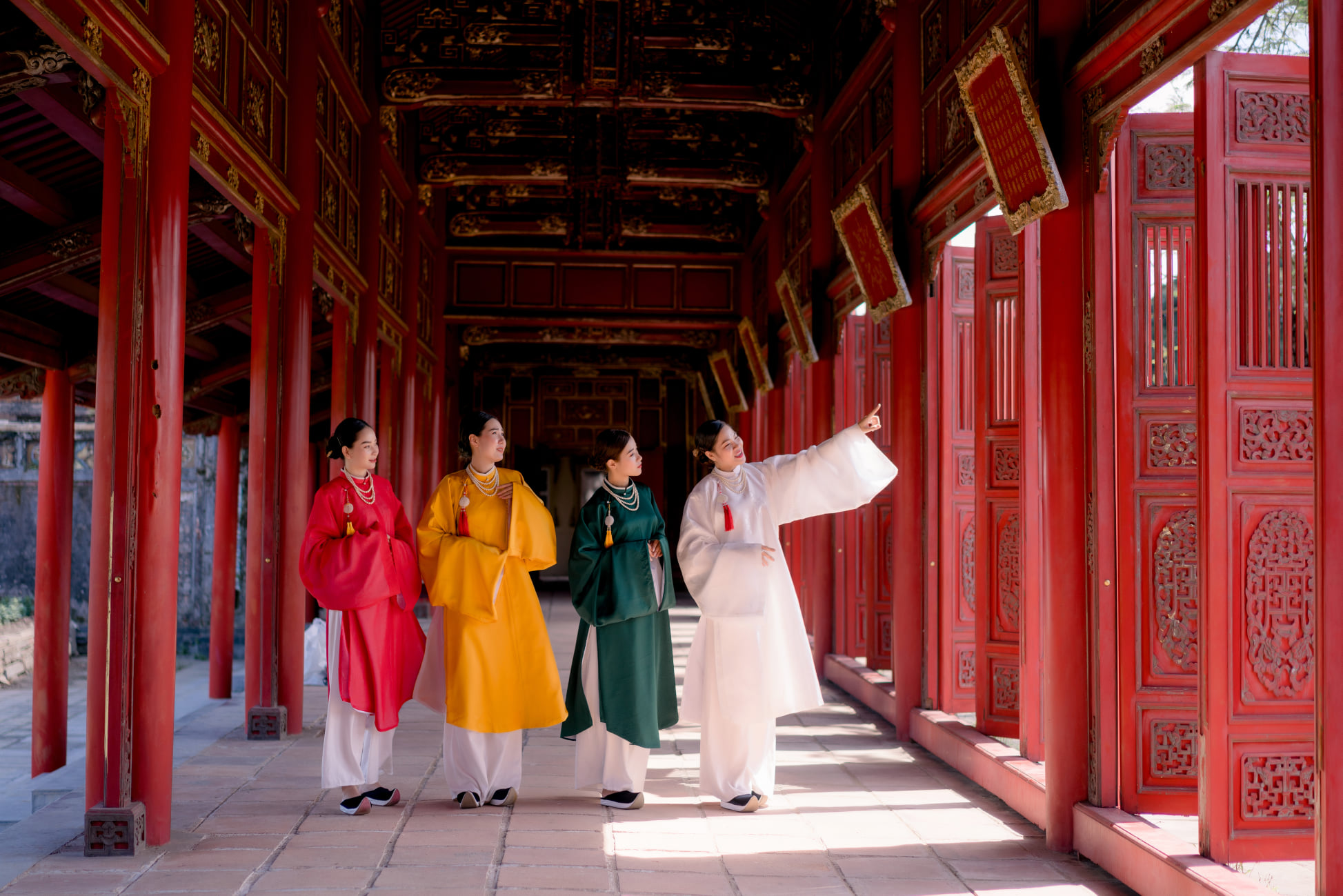
Five-panel Ao Dai in Hue
Ao Dai in Literature and Arts
The Ao Dai has been celebrated in literature, poetry, and arts for centuries. Writers and artists often use it as a metaphor for Vietnamese beauty, grace, and resilience, immortalizing its significance in the cultural consciousness.
Fashion Shows and Festivals: Celebrating the Ao Dai
Vietnamese fashion shows and festivals often highlight the Ao Dai's magnificence. These events not only showcase its aesthetic allure but also remind people of their heritage and encourage pride in their culture.
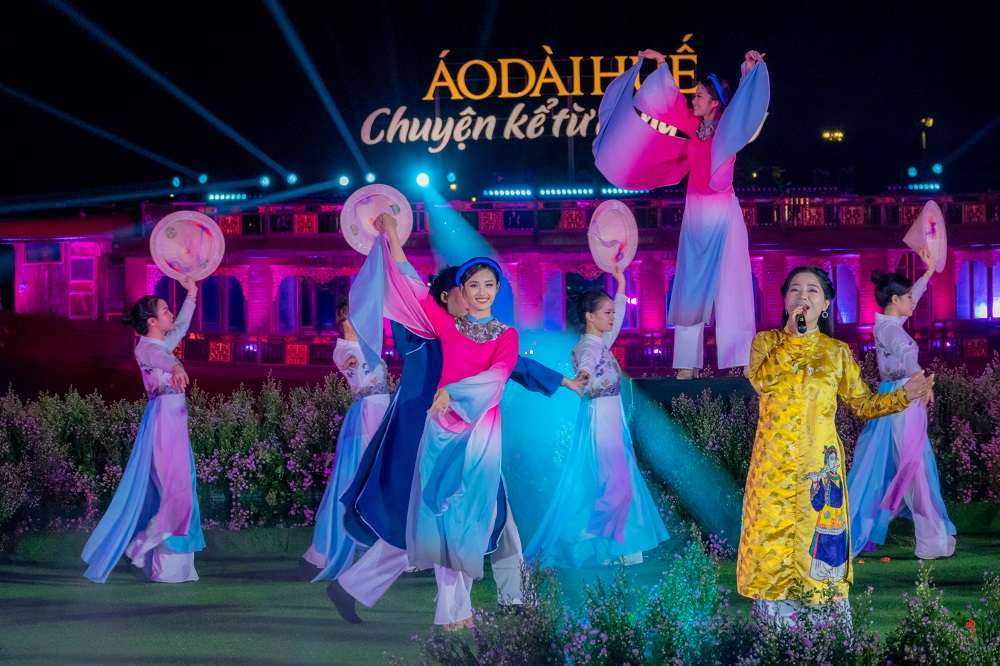
Ao Dai Hue Festival 2023 - Tales from the Perfume River
Preserving Tradition: Challenges and Efforts
In the face of modernization, preserving the Ao Dai's authenticity is a challenge. Yet, dedicated individuals, organizations, and government initiatives strive to ensure that this cultural gem continues to shine brightly.

Wearing Ao Dai at Quoc Tu Giam Hue
The Ao Dai in the Digital Age
The digital era has brought new avenues for Ao Dai's visibility. Social media, online marketplaces, and virtual exhibitions have enabled wider access and appreciation for this timeless attire.
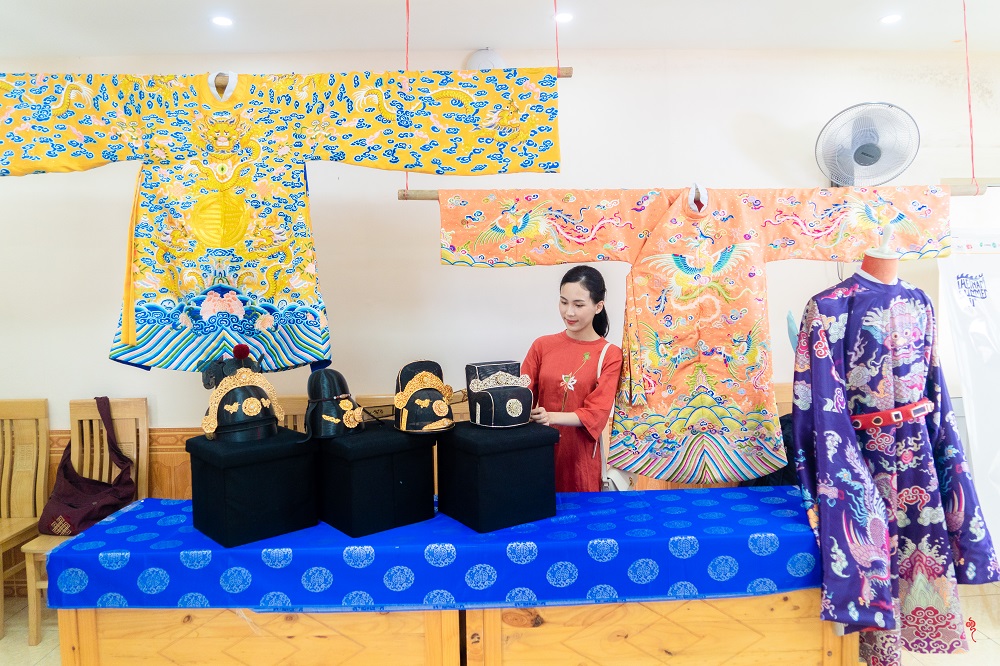
Ancient Ao Dai booth at the Vietnam Summer Fair 2022 event in Hue
Breaking Stereotypes: Men in Ao Dai
While traditionally associated with women, the Ao Dai is breaking gender stereotypes. Men are embracing this attire, celebrating their cultural heritage, and challenging conventional notions of fashion.
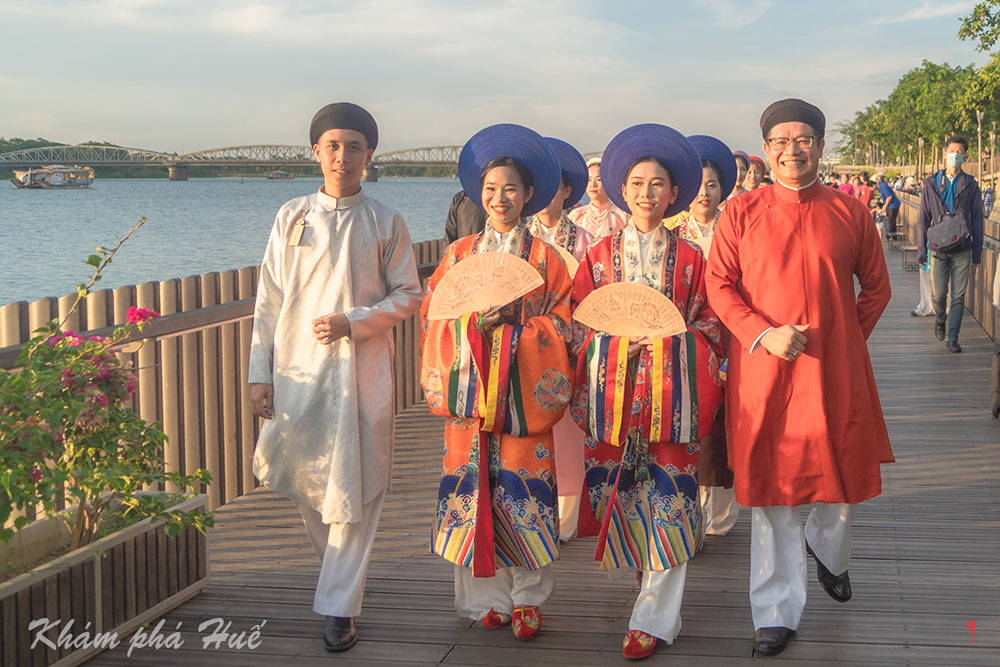
Hue Ao Dai Community Week 2023
Innovations and Future Prospects
The Ao Dai's journey is far from over. With innovative designers and a global community that values cultural diversity, the Ao Dai is poised to continue evolving while retaining its core essence.
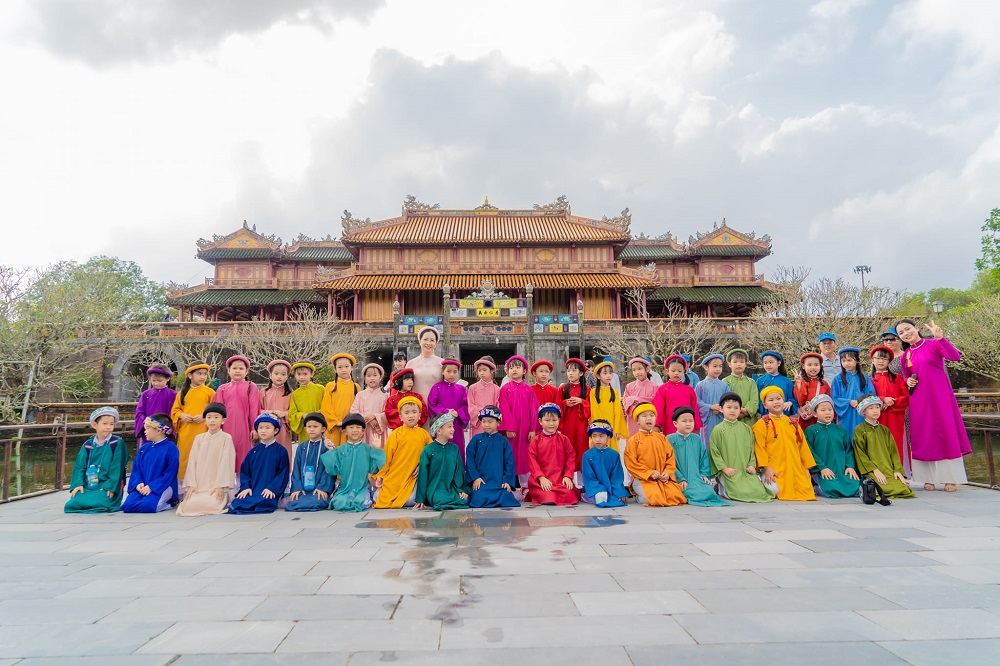
Conclusion
The Ao Dai stands as a testament to Vietnam's rich history and cultural heritage. Its evolution over the centuries and its enduring significance in modern times reflect the nation's resilience, pride, and creativity. As the world changes, the Ao Dai remains a timeless symbol, connecting the past with the present and weaving a vibrant thread into the tapestry of Vietnam's future.
FAQs
1. What does "Ao Dai" mean in English?
"Ao Dai" translates to "long dress," referring to the traditional Vietnamese attire.
2. Is the Ao Dai only worn by women?
While historically associated with women, men also embrace the Ao Dai in contemporary times.
3. Are there specific occasions for wearing the Ao Dai?
Yes, the Ao Dai is often worn during weddings, festivals, and formal events in Vietnam.
4. How has the Ao Dai influenced global fashion?
The Ao Dai's elegant silhouette and intricate designs have inspired designers globally, contributing to contemporary fashion aesthetics.
5. Where can I learn more about the Ao Dai's variations?
You can explore regional adaptations and modern styles through cultural exhibitions and online resources.